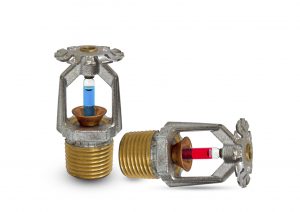
During the upgrade process, your fire sprinklers may be offline. This is part of the reason why it is essential to have different types of fire protection equipment onsite no matter what room your employees regularly use and the material you are responsible for handling.
During the upgrade process, your fire sprinklers may be offline. This is part of the reason why it is essential to have different types of fire protection equipment onsite no matter what room your employees regularly use and the material you are responsible for handling. However, one aspect of fire sprinkler maintenance that not many business owners can understand has to do with the associated commodity classifications.
Class I
This category includes typical non-combustibles. Some examples include canned foods, items made of metal, and anything in corrugated cartons that cannot ignite or otherwise catch on fire.
Class II
The category of items for Class II is slightly different. While it also involves Class I items, the containers used to store them are more flammable. Some examples include crates and boxes that are made of wood along with cardboard cartons and containers with wax paper exteriors.
Class III
When you are dealing with products made of wood, paper, and natural fibers, then you are working with items that fall under Class III when it comes to fire protection and the type of fire sprinklers that you need to have at the ready in case of a fire. Group A, B, and C plastics also belong to Class III as well.
Class IV
Class IV encompasses all items that belong to Classes I, II, and III. Group A plastics also fall under this category, determined by how much needs to be stored. For more information about what these plastics are, consult the information found under the Class V section below.
Class V – Plastics
Although not officially known as Class V items, plastics are a particular case when it comes to proper fire protection and how to calibrate your fire sprinklers during the process of installation, testing, and inspections. There are three sub-groups that the plastics fall into, and these groups are determined by how much they release when they burn and how quickly they burn once they catch fire. Group A is the type of plastic for many consumer items, such as toys, bottles for soda, and plastics found around the home. Group B plastics are softer, more pliable, and often include plastic tubing and nylon-derived materials as well. Group C plastics are specific items, such as CPVC pipes and melamine. Although they are difficult to ignite, once they burn they are dangerously combustible compared to the other things previously mentioned.
Fire Protection Services from Fireline
Whether you need smoke detectors, fire extinguishers, or an automatic sprinkler system installed at your commercial property, Fireline has you covered. We have been protecting people and property from fire damage since 1947—and our experience shows in our excellent work! We are known for our superb customer service, our expertise, and our reliability. For more information on how we can help your residential or commercial property, visit us online or give us a call at (800) 553-3405. We are located in Baltimore, MD, with a second office in Leesburg, VA. For more fire safety tips, be sure to follow us on Facebook, Twitter, and LinkedIn.
